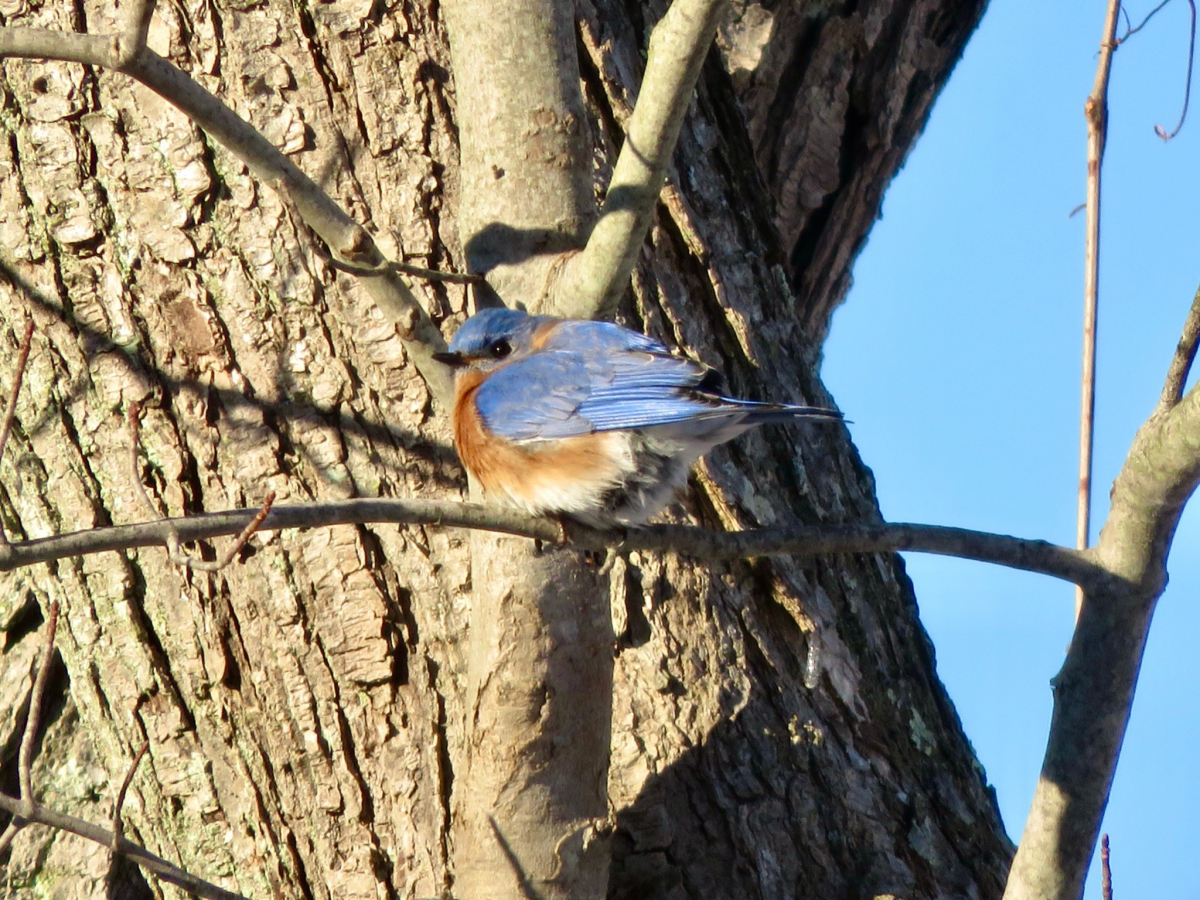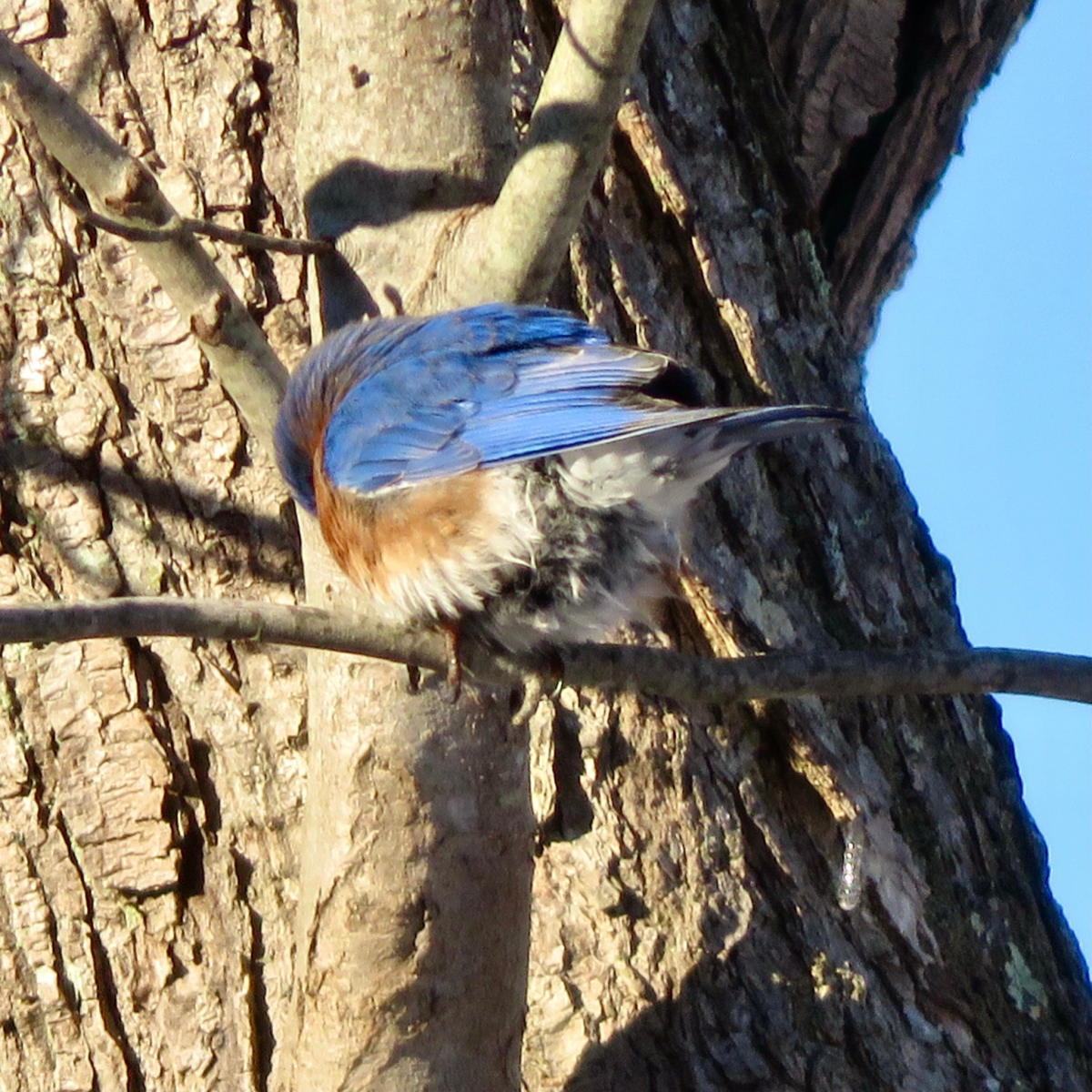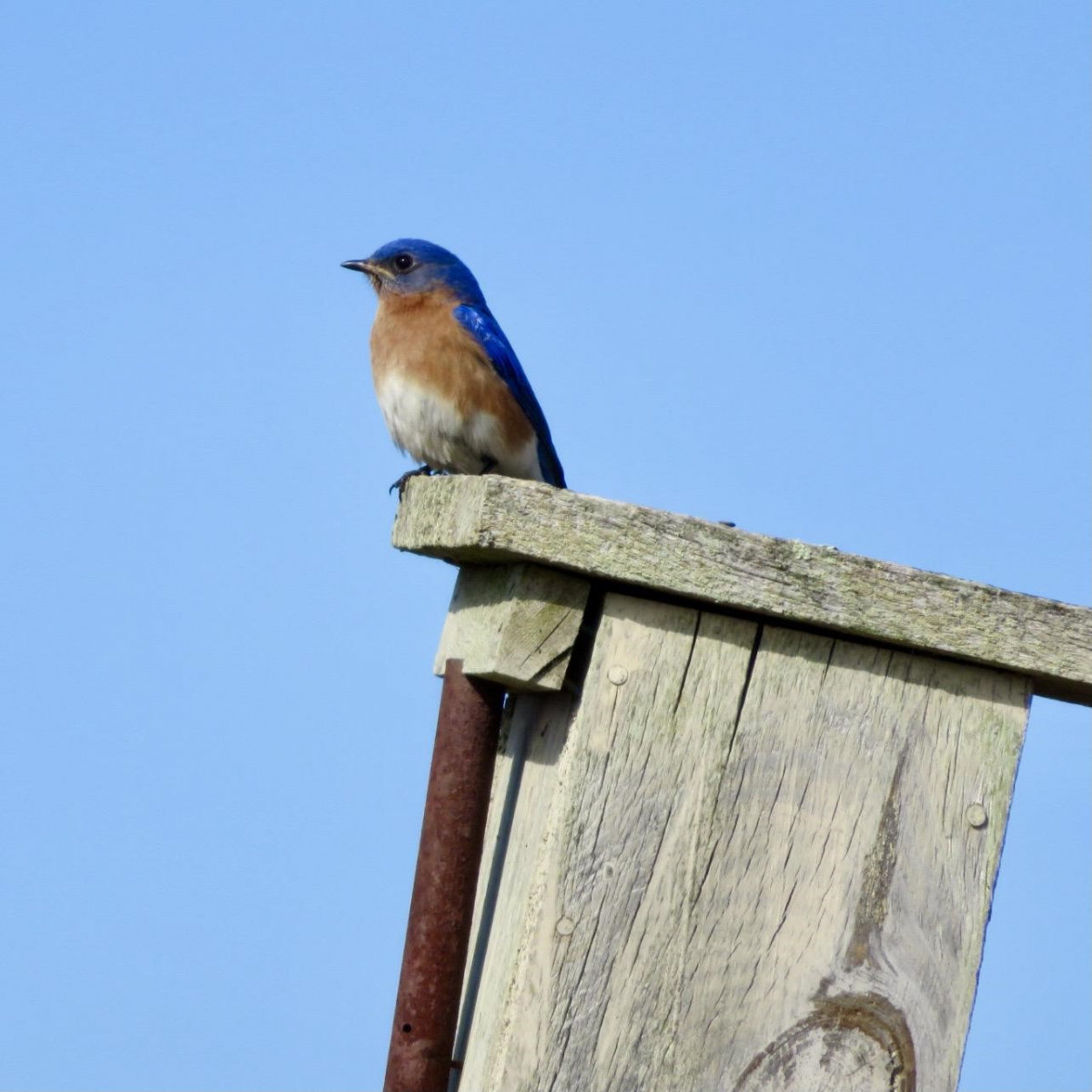Today is a mild, sunny day, one of those days when the library patrons are smiling and the birds are singing. It’s quite a contrast to last Friday’s ice storm which challenged anyone who ventured (or lived) outdoors. The day after the storm, I was stepping gingerly through the library’s ice-encrusted property to see what might be seen when the soft voices of eastern bluebirds caught my attention. A small flock was passing through, including this bird which paused long enough for me to take a good look.

Although the bird was alert, some of its feathers were pretty bedraggled as you can see in this closer view.

This led me to wonder how any bird could survive such harsh winter weather, not to mention one whose feathers have been compromised. I imagined that, in their place, I wouldn’t stand a chance. To keep this anthropomorphism in check, let’s review some of the physiology and behaviors that enable birds to survive the cold.
As naturalist Bernd Heinrich states in his article “How Do Birds Survive The Winter?”, ”Birds that stay north when the snow flies face two daily existential dilemmas - don’t freeze, and don’t starve.” Though the two challenges are woven together, let’s consider “don’t freeze” first. Birds who remain in cold regions must maintain an adequate body temperature to stay active. Their most obvious protection is the insulating capacity of their feathers, which, when puffed up, trap pockets of warm air. You may see songbirds that look especially large because of this “inflated” posture. Birds maintain their feathers through preening, that is, through cleaning them. Some species weatherproof their feathers with oil from a gland near the base of their tail.
Another adaptation to cold weather is shivering, a specialized form of shivering that birds can sustain for hours - or throughout a chilly night. Some species can regulate the temperature of their feet through a heat transfer process that keeps their feet just above the freezing point. According to the National Audubon Society, some species can lower their temperature at night, thereby conserving valuable body fat, a technique known as “regulated hypothermia.”
Other adaptations are behavioral. Faced with harsh weather, northern birds will seek night-time shelter in tree cavities, nesting boxes, or dense foliage. They will tuck in their bills and feet to reduce exposure. And they will eat! Late summer and fall are the times to gain weight as preparation for the scarcity ahead. Come winter, songbirds seek high energy foods that supply many calories, and they may spend all day gathering this “fuel” for the night ahead. An article by the U.S. Fish & Wildlife Service states that “chickadees eat more than 35 percent of their weight every day.” If you’ve ever watched birds urgently feeding before a storm, you can see how this preparation is essential. Gathering food also keeps the animals moving - and the cold at bay.
Though it may seem as if each bird is acting independently, social behaviors play a role in their survival. Precious warmth can be preserved by huddling and roosting together. Similarly, birds in a flock can benefit from the foraging discoveries of its individuals.
As a very brief introduction, this summary of winter adaptations is, by necessity, generalized: it implies that all wintering birds utilize the same techniques. The reality, of course, is much more complex. Each species applies a set of physical and behavioral strategies that increase its ability to survive. As Heinrich’s article explains, a woodpecker will take a different approach than a grouse or a crow, and so forth.
It might be reasonable to wonder, why bother? Why not “just” head south rather than face such challenges? What are the advantages of spending the winter in a cold climate? National Audubon’s “How Do Birds Cope With Cold In Winter” offers a hard reality: “These winter birds have a better chance of maintaining their territory year-round, and they avoid the hazards of migration.” The alternative is also fraught with difficulties.
Knowing more about winter adaptations only increases my respect and wonder for these animals. I still marvel at their ability to survive New England winters, and I hope that the tough individual I met last week will see another spring.

On a different note, I wish to congratulate the winners of “Trees in Winter.” Debbie and Tricia will soon receive copies of the Winter Tree Finder by May Theilgaard Watts. Thanks to all for participating. February is a good time to practice those tree identification skills!
At the Library

Winter World: The Ingenuity of Animal Survival
by Bernd Heinrich